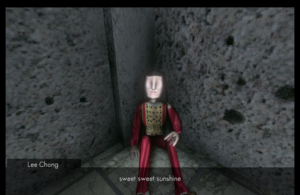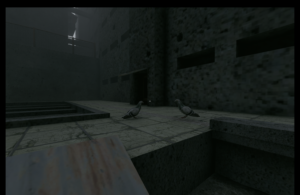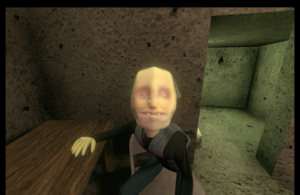Babbdi is an abstract, short adventure, walking simulator game designed for players who may be surfing the Steam market in hopes of running across a free indie game to try (and of course, above the age of 13). The game was developed by Sirius and Léonard Lemaitre and is available through Steam.
In the realm of video games, the simple act of walking can transform into a profound storytelling tool, particularly in atmospheric and explorative games like those set in the fictional city of Babbdi. This seemingly mundane activity becomes a canvas for rich narrative development, emotional engagement, and deep thematic exploration.
Walking in Babbdi is not merely about getting from one place to another; it’s about discovery. As players navigate through its suburbs and decayed landscapes, each step taken is an opportunity to uncover the secrets that lie hidden in plain sight. The game encourages players to explore at their own pace, revealing hidden nooks filled with everyday relics that tell their own stories—old toys, faded photographs, and other ephemera of past lives. This form of exploration allows players to connect deeply with the game’s world, making every discovery a piece of the larger narrative puzzle.

“An NPC I encountered after missing a parkour jump”
The pace of walking allows players to fully absorb the atmosphere of Babbdi. Every dilapidated building, every silent street corner, and the subtle ambient noises that float through the air contribute to building a vivid, immersive world. This slow traversal lets the atmosphere seep into the player’s experience, making the setting not just a backdrop, but a character in its own right. The deliberate pace heightens the emotional stakes, making the environment’s impact on the player more profound and lasting.
As players walk through the bleak landscapes of Babbdi, they encounter characters who reflect the despair and hopelessness of the environment, as well as those who find joy in small pleasures. This journey prompts players to reflect on themes of despair, hope, and human resilience. The game subtly nudges players to think about their own lives, their joys, and their struggles, creating a bridge between the player’s world and that of Babbdi.

“Finding joy in pigeons”
The act of walking also controls the narrative pacing of the game. It ensures that the story unfolds at a measured, intentional pace, allowing players time to digest complex themes and build connections with the characters and their surroundings. This pacing is crucial in maintaining engagement and curiosity, as players are not rushed through their journey but are instead invited to experience every moment fully. By inviting players to walk through its narrative, Babbdi becomes more than a game; it becomes a story about life, resilience, and the human condition—a narrative journey worth taking.
In Babbdi, the choice to use walking as the primary mode of navigation is particularly significant. This design choice leverages the simplicity of movement to deepen the player’s connection with the environment. Unlike more structured narrative games like Dear Esther, which leads the player through a scripted story, Babbdi allows for an open-ended exploration that places much of the narrative responsibility on the player. This can be seen as both a strength and a weakness. On one hand, it encourages a unique personal interaction with the game world, where the story unfolds at the player’s pace and through their curiosity-driven exploration. On the other hand, this lack of structure may result in some players missing key narrative elements or feeling directionless, which can detract from the overall experience.
Moreover, Babbdi’s approach contrasts sharply with games like Firewatch, which, while also relying heavily on walking, includes dynamic dialogue that drives the narrative forward and provides clearer direction. Babbdi’s minimalistic interaction model, which strays away from complex dialogues for environmental cues and visual storytelling, might not engage all players equally but offers a more contemplative and immersive experience for those who engage with it deeply.
Improving Babbdi could involve integrating subtle narrative cues that guide the player through its world without overtly directing them. This could be achieved by incorporating more significant interactions with the environment or NPCs that subtly hint at where to explore next. Additionally, integrating puzzle elements or environmental challenges that need to be solved to unlock new areas or pieces of the story could make the exploration feel more rewarding and give a clearer sense of progression, enhancing the player’s sense of achievement and discovery.

“How most NPC interactions occur – they’re mostly dialogue and don’t tell much in terms of the storyline, but more about the environment itself.”
Incorporating formal elements such as rules, goals, and challenges enhances player engagement. Babbdi’s rules are minimalistic, facilitating extensive interaction with the game world. Its goals, though implicit, encourage players to explore and piece together the narrative at their own pace. Challenges are less about physical obstacles and more about interpreting subtle environmental cues, aligning with the game’s introspective themes.
“Rules of Play” by Katie Salen and Eric Zimmerman emphasizes that meaningful play arises when game mechanics, dynamics, and aesthetics are harmoniously integrated. Babbdi successfully creates an immersive narrative through environmental storytelling but could improve by diversifying its mechanics and dynamics, deepening player engagement and broadening its appeal.
Babbdi is a compelling example of how walking simulators can utilize basic gameplay mechanics to deliver complex narratives and evoke strong emotional responses. The game’s design choices, while innovative, also leave room for improvement in narrative engagement and clarity. By applying theories from the MDA framework and “Rules of Play” and integrating more interactive elements, Babbdi could potentially enhance its narrative impact and player engagement, making it not only a reflective journey but also a more universally compelling game experience.


